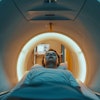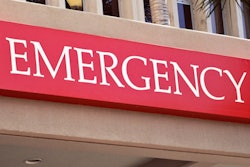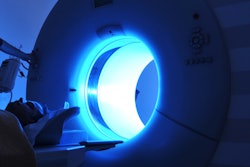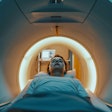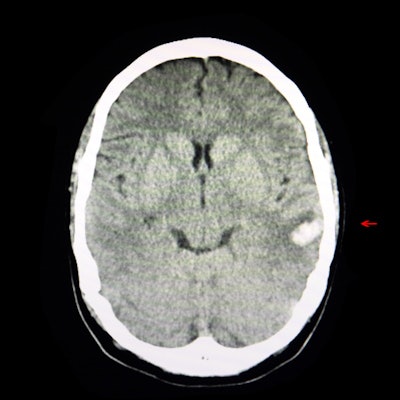
Head CT utilization in the emergency department (ED) has continued to increase, as has the use of physician assistants and nurse practitioners in this setting. Are the two related? Apparently not, a study published May 30 in Academic Radiology has found.
In an era of active attempts to curb healthcare costs, the results prompt the question of what exactly causes the increased use of advanced imaging in the emergency department, wrote a team led by Dr. Debayan Bhaumik of the University of Colorado in Aurora. Between 1994 and 2015, neuroimaging orders per 1,000 patients increased by 500%, the group noted.
"A recent large-scale Medicare database demonstrated that nurse practitioners/physician assistants order significantly more imaging studies in the outpatient clinic environment compared to primary care physicians for both new and established patients," the study authors wrote. "These findings suggest the need to evaluate the imaging utilization of nurse practitioners/physician assistants in other clinical settings, particularly the emergency department."
To this end, Bhaumik's group investigated whether there were any ordering or patient factors that might predict positive noncontrast head CT exams in the emergency department, hypothesizing that nurse practitioners and physician assistants would have lower positive exam rates than physicians -- which would suggest overutilization.
The study included 6,624 emergency department patients who underwent noncontrast head CT scans at a level 1 trauma center during a seven-year period. The team tracked exam results, ordering provider training and experience, and a variety of ordering and patient attributes (such as patient age and sex, whether the exam was performed during the day or during the night, and type of exam indication). It defined positive exams as those that identified conditions such as acute hemorrhage, hydrocephalus, herniation, or worsening prior findings and that prompted changes in patient treatment or management.
Of the 6,107 (92.2%) CT exams ordered by physicians, 4.6% were positive, while of the 517 (7.8%) of those ordered by nurse practitioners or physician assistants, 3.7% were positive. These differences were not statistically significant, the team found.
Factors associated with positive CT exams included the following:
- Older patient age (< 0.001)
- Indications of cancer (< 0.001)
- Neurological complaints such as aphasia, slurring, facial droop, or visual abnormalities (0.001)
- Studies ordered during the day (0.021)
It doesn't appear that the study points to overutilization of head CT by nonphysician providers in the emergency department, which suggests that there are clinical trends at work, according to Bhaumik's team.
"We found no significant difference in rates of exam positivity between physicians and nurse practitioners/physician assistants, even accounting for years of experience," the group concluded. "This suggests increasing utilization of head CT in the emergency department is not due to the increasing presence of nurse practitioners/physician assistants, and may be reflective of general practice trends and clear diagnostic algorithms leading to head CT."


